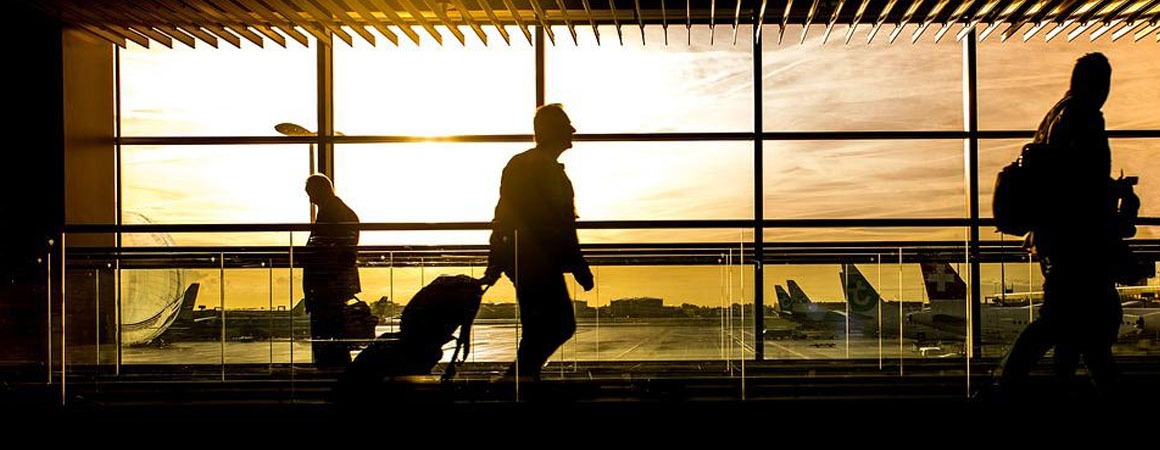Getting Around Panama

Airlines
Panama has a good domestic flight network, the main domestic airlines are Helix Craft Trading Corporation and Air Panama, assessed by the US Federal Aviation as operated in compliance with international aviation standards. All domestic airlines operate out of Panama’s main domestic airport, Aeropuerto Marcos A. Gelabert, located in the Albrook area of Panama City, commonly known as Albrook Airport.
Be aware that baggage weight allowance on domestic flights is a total of 25 lbs. (about 14 kg) for checked baggage and carry on combined. You will also be asked to state your body weight at check in. The small domestic planes have maximum weight limits. Overweight charges (for baggage) varies according to destination, but is rarely more than USD 1.00 per pound. If you are traveling inside Panama with big luggage, you may ask Air Panama to send your luggage as Cargo, the rate will be cheaper than to pay for the overweight and you will avoid any problems at the check in stand. Showing good manners and being friendly with airport staff is also a good tip for such case.
Car rental
Car rental is fairly expensive in Panama. Car rental agencies have offices at most airports, and locations in main cities. Major rental agencies include Economica, National, Thrifty, Budget, Avis, Alamo and Hertz. Rates generally include mandatory insurance and unlimited mileage. To rent a car, you must be 25 years of age (23 if you pay by AMEX) and hold a valid driver’s license.
When you accept your rental car, please be sure to inspect it carefully and note any damages, scratches, or missing items on the rental agreement, as you could be charged when the car is returned. In Panama City and other major cities, it is not necessary to rent a car as taxis are reasonably priced and readily available – except when it is raining! Taxis can be hailed on the street and often sound their horn to show their availability. Don’t be surprised that the taxi that stops for you already contains other passengers. Taxis do not operate with meters although there are fixed rates for certain destinations.
Make sure you agree on the fare with the driver before getting into a car if you don’t to be caught by surprise. Do not be afraid to bargain for longer distances. Consult your hotel information desk for rate recommendations. Taxis can also be rented by the hour or for longer periods. Another alternative is to hire a personal car driver, whose information can be provided by hotels and travel agencies. Professional terrestrial transportation agencies will furnish comfortable vans or mini buses, equipped with air conditioning, with capacity to accommodate 4 people or more. This is the safest way to go.
Bus Service
Panama has an excellent, inexpensive bus system linking most communities in the country. The main bus terminal is close to Albrook Airport. Routes between major cities are served by large Mercedes air-conditioned buses with video screens and reclining seats. Coaster buses run on smaller town links. The buses are very cheap. However, smaller urban and suburban routes can be slow and crowded.
Panama has a new bus system for transportation throughout the city called Metrobus. Additionally, it has routes along the north and south corridors that offer roads for faster traffic, to be able to reach your destination more quickly. This system of bus routes is efficiently organized, resulting in reduced wait times at bus stops and a guaranteed bus frequency, making your trip reliable. The buses are accessible only by Metrobus card (no cash) which are sold and can be refilled in a number of locations throughout Panama city including malls, supermarkets, visitors’ centers etc.
As of April 2014, another transportation system has been incorporated in Panama City, the Panama METRO, which is Panama’s first line subway system that goes surface and underground, going initially from the community of Los Andes until the Albrook Bus Terminal. Now the project is been expanded until the community of El Valle de San Isidro, benefitting a population of approximately 500 thousand habitants, mostly in the District of San Miguelito.
The Metro includes 15 stations, of which 8 are underground, 6 elevated and 1 at surface level, with an approximate platform length of 100m. This subway system was created to be integrated with the Metrobus system, with the objective to decrease the amount of vehicles transiting the main streets of Panama City.
When to visit
If you are a business traveler, your business may dictate the time of your visit, but if you do have a choice you should be aware that Panama has two main seasons. The drier summer season is the main tourist season and runs from December to April. The rainier season is from the May to November. This is particularly true for the Pacific southern part of Panama.
Less than 9 degrees north of the equator, most of Panama enjoys temperatures that are fairly consistent year round, with daytime temperatures in the 90s (30 – 33 °C) and nighttime around 70 (21 – 23 °C). Tropical maritime; hot, humid, cloudy; prolonged rainy season, called winter or invierno (May to November); short dry season, called summer or verano (December to April). The most popular time to travel to Panama is December through March, when lower humidity and nearly zero percent chance of rain make it more ideal for travelers.
During most of the rainy season, mornings and early afternoons are usually sunny, while late afternoons and evenings have intermittent rainfall.
Most areas are quite warm, but a few places, such as Boquete, Cerro Punta and El Valle can get a little chilly at night. You definitely want a heavy rain-proof jacket if you’re going to the top of Barú since you will be above 3000m for a little while.
Natural hazards: Occasional severe storms and forest fires in the remote Darien area. Hurricane-strong winds are only a very small possibility in Panama. Because of its geographic position, it is very unlikely that Panama could be in the path of any hurricane, unlike the other Central American countries. Hurricanes normally hit farther north.
For more information, please contact us.
